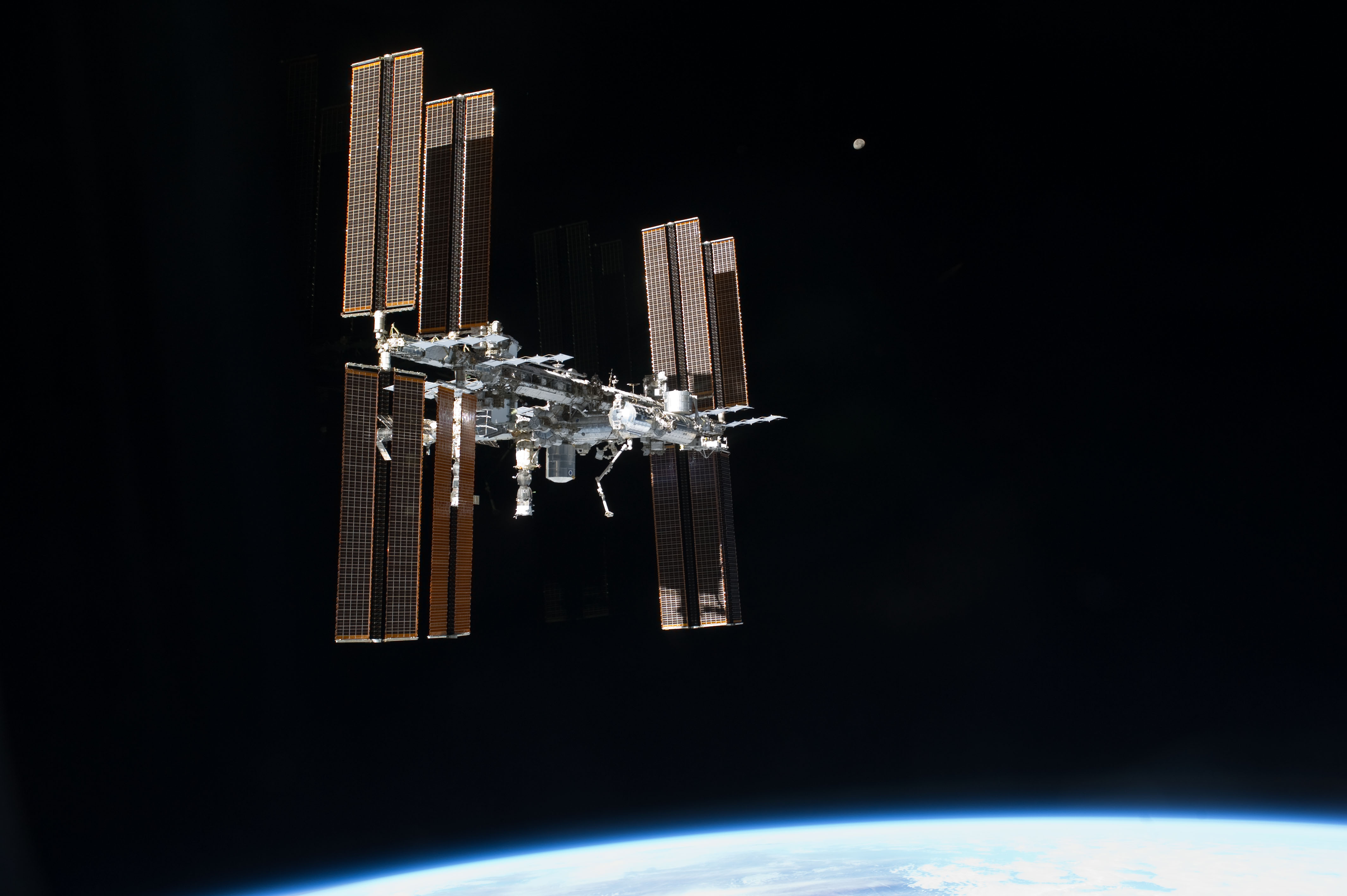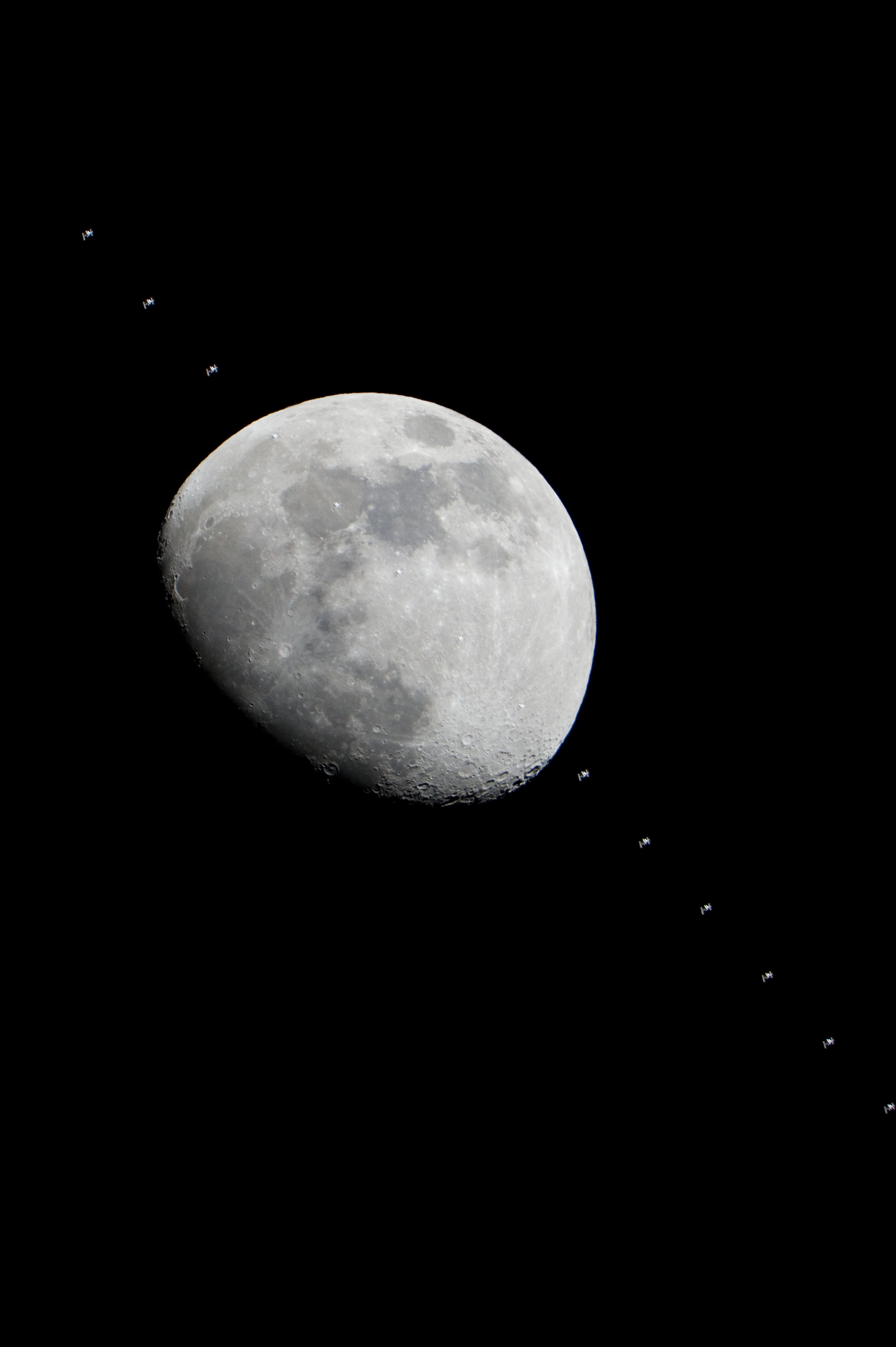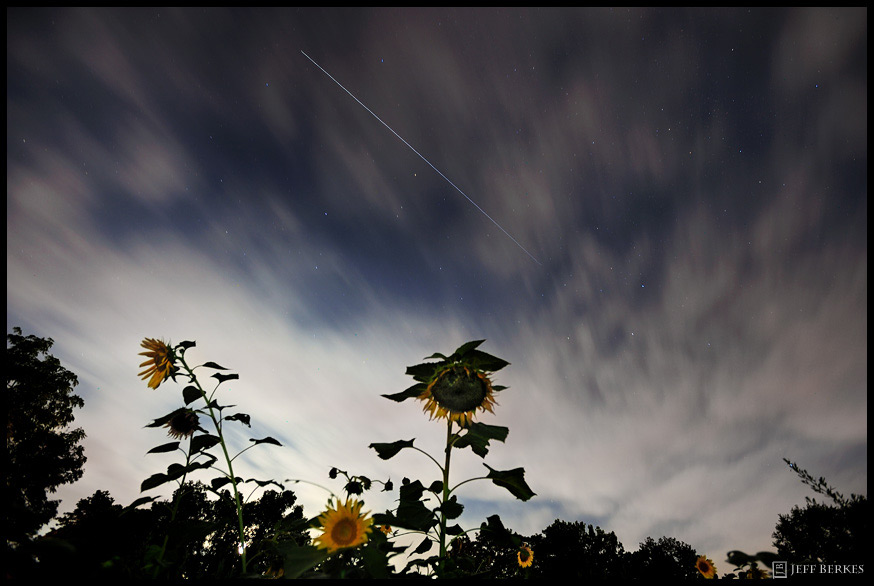Want to See the Space Station? NASA Text Messages Tell You How

NASA just made it easier to catch a glimpse of the International Space Station — the largest manmade structure in space — as it soars across the night sky. The best part: no telescope required.
The space agency has launched a new free service called "Spot the Station" that allows observers to sign up for e-mail alerts or text messages whenever the space station may be visible overhead, weather permitting. The messages, which will be sent out a few hours before the actual sighting opportunity, are tailored for an observer's location based on their home country, state and city, NASA officials explained in a statement.
"As the thirdbrightest object in the sky, after the sun and moon, the space station is easy to see if you know where and when to look for it," NASA officials wrote. "The space station looks like a fast-moving plane in the sky, though one with people living and working aboard it more than 200 miles above the ground. It is best viewed on clear nights." [Photos: Spotting Satellites & Spaceships from Earth]

With a wingspan the size of a football field, the International Space Station is the biggest artificial structure in space today. It can be easily spotted from Earth with the unaided eye, but only if you know exactly when and where it will appear in the sky.
Station sighting opportunities from 4,600 locations around the world are identified twice a week at NASA's space station Mission Control Center at the Johnson Space Center in Texas. The Spot the Station service will send out alerts for only the best sighting opportunities, when the space station is relatively high in the night sky and makes a long pass overhead, NASA officials said.
"This will be anywhere from once or twice a week to once or twice a month, depending on the space station’s orbit," NASA officials explained. "Don’t worry if there are big gaps in between sightings!"
You can sign up for NASA's Spot the Station alerts here: http://spotthestation.nasa.gov/.
Get the Space.com Newsletter
Breaking space news, the latest updates on rocket launches, skywatching events and more!
The Spot the Station service is not the only way to find out how to see the space station in the night sky. The Twitter-based Twisst ISS Alerts service sends out automated Twitter messages to users during prime space station sightings over their locations.
There are also several websites dedicated to observing the International Space Station and other spacecraft. They include:
You can also find real-time satellite tracking information, including spacecraft locations over Earth at any time of day, at this website: http://www.n2yo.com/?s=25544.

The International Space Station is currently home to six astronauts flying on the Expedition 33 mission. The crew includes three Russians, two Americans and one Japanese astronaut.
The $100 billion space station is the product of five different space agencies representing the United States, Russia, Europe, Japan and Canada. Construction began in 1998 and the first astronaut crew took up residence in 2000.
Since then, the space station has been constantly manned by rotating international teams of astronauts and cosmonauts.
Editor's Note: If you have snapped an amazing photo of the International Space Station, or any other spacecraft or celestial object, in the night sky and would like to share the picture for a story or gallery, send images and details (including viewing location) to managing editor Tariq Malik at: tmalik@space.com.
You can follow SPACE.com Managing Editor Tariq Malik on Twitter @tariqjmalik and SPACE.com on Twitter @Spacedotcom. We're also on Facebook & Google+.
Join our Space Forums to keep talking space on the latest missions, night sky and more! And if you have a news tip, correction or comment, let us know at: community@space.com.

Tariq is the Editor-in-Chief of Space.com and joined the team in 2001, first as an intern and staff writer, and later as an editor. He covers human spaceflight, exploration and space science, as well as skywatching and entertainment. He became Space.com's Managing Editor in 2009 and Editor-in-Chief in 2019. Before joining Space.com, Tariq was a staff reporter for The Los Angeles Times covering education and city beats in La Habra, Fullerton and Huntington Beach. In October 2022, Tariq received the Harry Kolcum Award for excellence in space reporting from the National Space Club Florida Committee. He is also an Eagle Scout (yes, he has the Space Exploration merit badge) and went to Space Camp four times as a kid and a fifth time as an adult. He has journalism degrees from the University of Southern California and New York University. You can find Tariq at Space.com and as the co-host to the This Week In Space podcast with space historian Rod Pyle on the TWiT network. To see his latest project, you can follow Tariq on Twitter @tariqjmalik.









